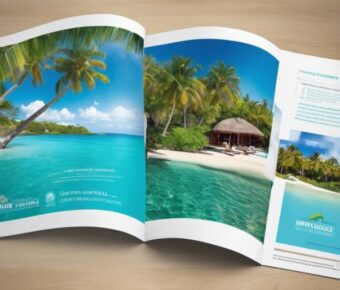
Zero Waste Travel Packing: 10 Essential Tips for Eco-Friendly Adventures
Traveling doesn’t have to mean ditching your eco-friendly habits. With a bit of planning, you can explore the world and barely leave a trace behind.
Packing for zero waste travel is really just about bringing reusable stuff so you don’t have to rely on single-use products along the way. Just pack a few key reusable items like food containers, cloth bags, and refillable toiletries, and you’ll notice a big drop in the trash you’d otherwise make while traveling.
Most travelers don’t realize how much waste they create until they’re far from home. Plastic water bottles, takeout containers—travel is packed with convenience items that end up in the bin.
But with some simple swaps in your bag, you can enjoy your trip without all the environmental guilt. Foldable grocery bags barely take up space but can save you from using dozens of plastic ones, and reusable containers come in handy for everything from leftovers to snacks from a local market.
Contents
- Key Takeaways
- Fundamental Principles of Zero Waste Travel Packing
- Understanding the Zero Waste Philosophy
- Benefits of Adopting a Zero Waste Mindset When Traveling
- Identifying Common Sources of Travel Waste
- Choosing the Right Travel Bag for Zero Waste Packing
- Selecting Lightweight and Durable Luggage
- How to Organize Your Travel Kit Efficiently
- Best Materials for Eco-Friendly Travel Bags
- What To Pack: Essential Zero Waste Items
- Reusable Water Bottles and Stainless Steel Options
- Reusable Containers, Lunchboxes, and Food Wraps
- Travel Utensils and Reusable Straws
- Eco-Friendly Toiletries and Personal Care Products
- Clothing and Accessories for Sustainable Travel
- Prioritizing Multi-Use and Versatile Garments
- Benefits of Choosing Organic Cotton and Natural Fabrics
- Zero Waste Packing for Specific Destinations
- Zero Waste Packing Tips for Urban Destinations
- Sustainable Packing Strategies for Hawaii and Other Islands
- Zero Waste Toiletries and Personal Hygiene Solutions
- Solid Toiletries: Shampoo Bars and Toothpaste Tablets
- Plastic-Free Alternatives for Feminine Hygiene
- Travel-Sized Reusable Containers for Liquids
- Zero Waste Food And Beverage Packing
- Reusable Food Containers for Snacks and Meals
- Zero Waste Solutions for Coffee and Takeaway Drinks
- Eco-Friendly Shopping and Souvenir Strategies While Traveling
- Carrying Reusable Shopping Bags and Produce Sacks
- Avoiding Single-Use Items and Excess Packaging
- Waste Management and Recycling on the Go
- Effective Sorting and Recycling While Abroad
- Composting Food Scraps During Your Trip
- Practical Zero Waste Travel Tips and Tricks
- Minimizing Carbon Emissions During Travel
- Prioritizing Carbon Offsetting Initiatives
- Selecting Eco-Friendly Accommodations
- How to Identify Sustainable Lodging Options
- Communication Strategies for Zero Waste Requests
- Frequently Asked Questions
- What are the essential items to include in a zero waste travel kit?
- How can one effectively minimize toiletries waste while traveling?
- What strategies can be employed to avoid single-use plastics during trips?
- More Travel Guides
Key Takeaways
- Pack multipurpose reusables like cloth bags, food containers, and water bottles to skip single-use plastics while you travel.
- Choose concentrated, solid toiletries in reusable containers to save space and reduce packaging waste in your luggage.
- Plan ahead by researching eco-friendly options at your destination, like bulk food stores, local markets, and waste management facilities.
Fundamental Principles of Zero Waste Travel Packing
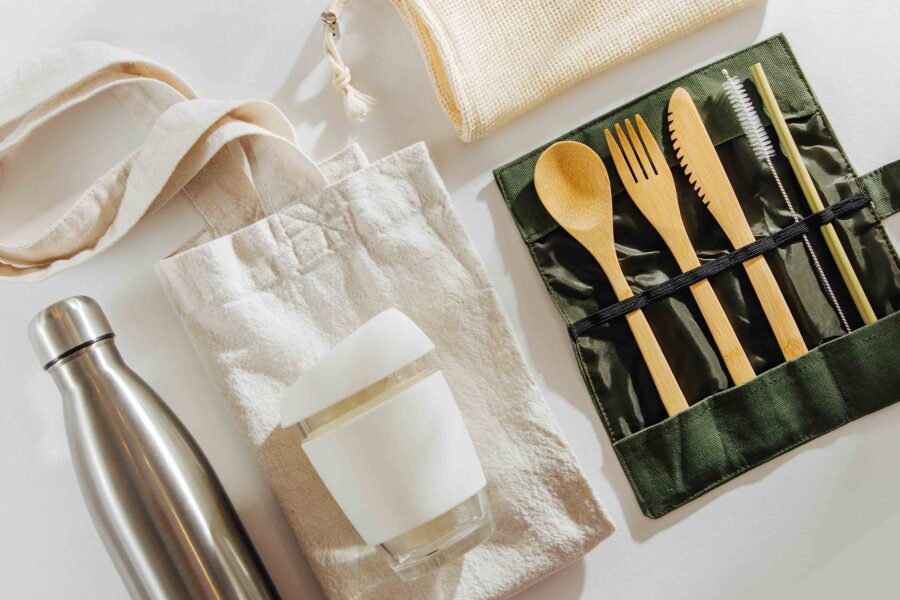
Packing for a trip without making a bunch of waste takes some planning and a shift in mindset. If you get the approach right, you can seriously shrink your environmental impact and make your travels easier—and probably cheaper, too.
Understanding the Zero Waste Philosophy
Zero waste travel isn’t about being perfect. It’s about doing a little better every time you go somewhere.
The idea is pretty straightforward: try to send as little as possible to landfills while you’re out exploring. The philosophy is built on the 5Rs: refuse what you don’t need, reduce what you do, reuse, recycle when you have to, and rot (compost) when you can.
I’ve noticed the most successful zero waste travelers think ahead. Before buying something new for your trip, ask yourself if you truly need it or if you already own something that’ll do the trick.
Think about the full lifecycle of everything you pack. That cheap plastic travel container might seem handy, but what if it cracks halfway through your trip? It’s worth investing in durable items that’ll last for plenty of journeys.
Benefits of Adopting a Zero Waste Mindset When Traveling
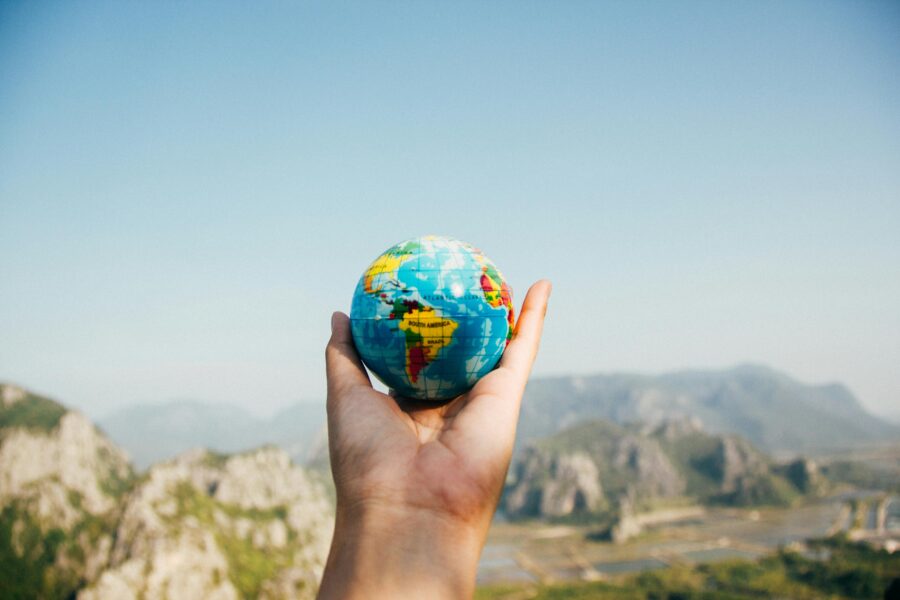
Going zero waste while traveling has some perks that go beyond just helping the planet. You’ll save money, for one—no need to buy overpriced bottled water or single-use stuff that you toss after one use.
You’ll also travel lighter. Minimalism and zero waste go hand in hand—fewer, multi-use items mean less to lug around. Honestly, there’s nothing like breezing through the airport with just a carry-on.
Zero waste travel gets you closer to your destination, too. You’ll end up at local markets instead of convenience stores, and you might connect with locals while searching for package-free options.
And your carbon footprint? It shrinks. Skipping single-use plastics and disposables means you’re cutting down on the emissions from making and tossing those products.
Identifying Common Sources of Travel Waste
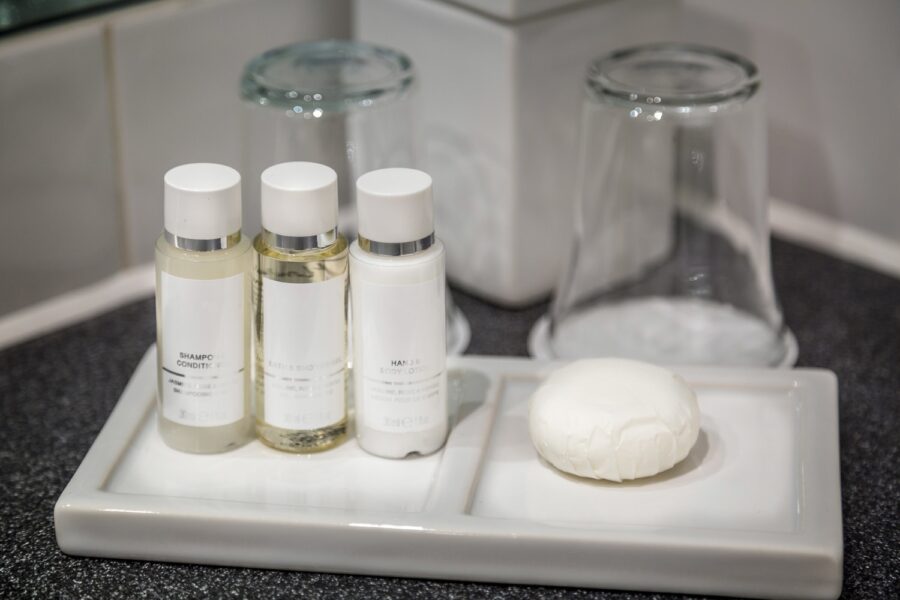
Travel creates sneaky waste that’s easy to miss. Airplane snacks are always wrapped in plastic. Hotels hand out tiny shampoo bottles. Convenience stores sell water in disposable bottles. Even your boarding pass adds to the pile of paper waste.
Food packaging is probably the biggest offender. Those grab-and-go airport meals generate so much trash. Tourist hotspots lean on single-use items for quick service.
Toiletries add up fast, too. Those mini hotel amenities might look cute, but they add up to millions of tiny plastic bottles every year.
Transportation choices matter. Rental car receipts, bus tickets, taxi slips—they all add up. And souvenirs? Too many are made cheaply, break quickly, and get tossed.
Digital alternatives work for a lot of paper stuff—maps, tickets, travel guides. Spotting these waste sources before you go lets you pack to avoid them.
Choosing the Right Travel Bag for Zero Waste Packing
Your travel bag is the foundation for any zero waste trip. The right bag doesn’t just carry your stuff—it can actually help you cut down on waste and make traveling smoother.
Selecting Lightweight and Durable Luggage
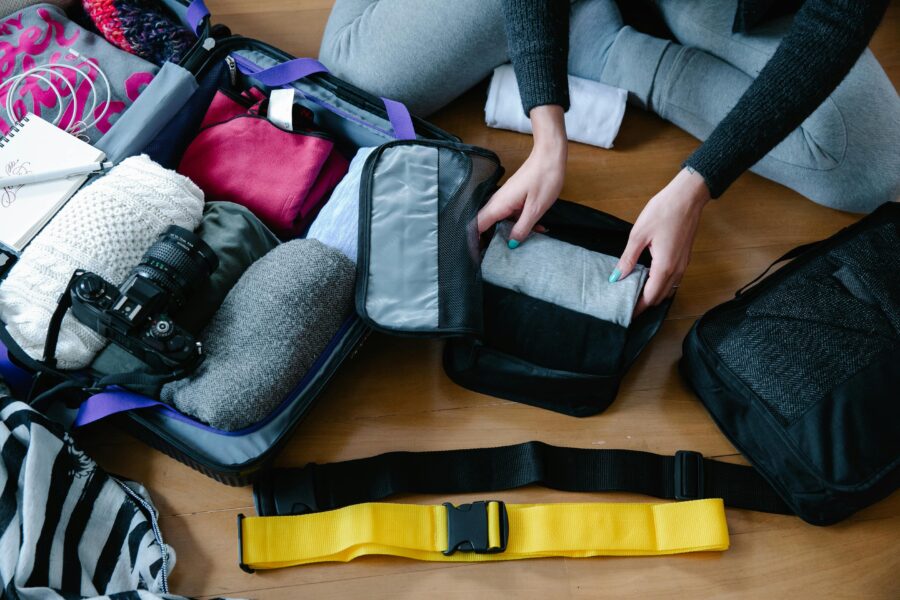
When you’re picking a travel bag for zero waste trips, weight seriously matters. A lighter bag means you can pack more without going over airline limits or straining your shoulders.
Look for bags made from recycled materials—they’re better for the planet and usually hold up for years. I’ve found that backpacks with plenty of compartments make organizing your stuff so much easier. They spread the weight across your back and keep your hands free.
Some folks love wheeled luggage, while others (like my husband) swear by no wheels since they’re easier to carry on rough ground. The best bags are water-resistant, so you don’t need extra plastic covers. Lifetime warranties are a good sign—companies that offer them usually make bags that last, so you won’t have to replace them anytime soon.
How to Organize Your Travel Kit Efficiently
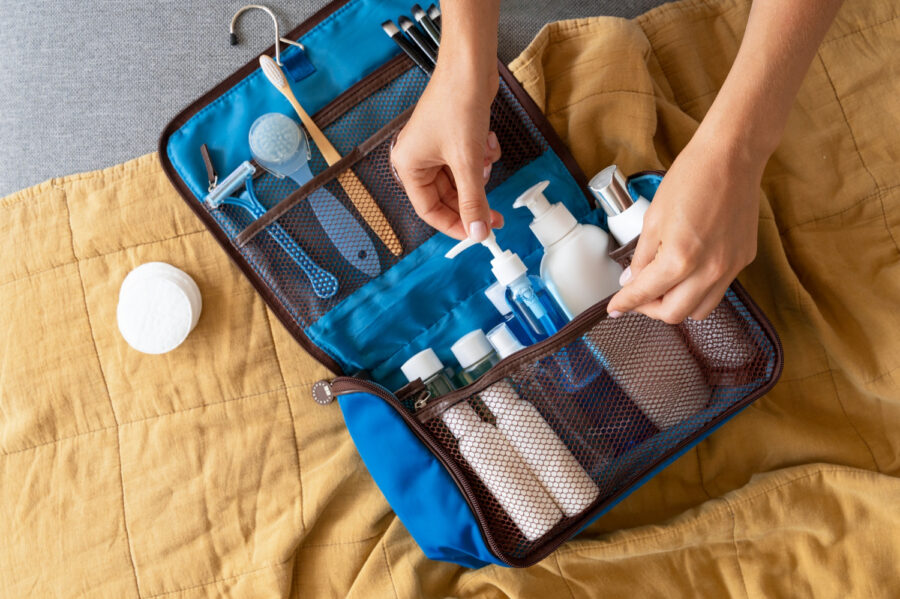
Packing cubes are a total game-changer for organizing a zero waste kit. They squish your clothes down and keep similar things together, so you can skip plastic bags.
I color-code mine—blue for clothes, green for toiletries. Zero waste essentials like reusable utensils, cloth napkins, and your water bottle belong in outer pockets for easy grabbing during your trip.
That way, you won’t end up buying disposable stuff at the last minute. For toiletries, a hanging organizer with clear pockets makes it simple to see what you’ve got, so you don’t forget anything in hotel bathrooms.
Keep your reusable travel bottles in a leakproof silicone case instead of a disposable plastic bag. Toss your zero waste kit in your carry-on so it’s handy during flights or layovers!
Best Materials for Eco-Friendly Travel Bags
Organic cotton canvas bags are my top pick for eco-friendly travel. They’re biodegradable, sturdy, and actually get better with age.
Look for unbleached ones with minimal dyes to keep the chemical impact low. These bags breathe, so you won’t have to worry about mildew on long trips.
Recycled polyester made from plastic bottles is another solid choice. It’s not biodegradable, but it gives plastic waste a second life and usually lasts for years. They’re lightweight and water-resistant, too.
Cork is catching on as a sustainable bag material. It’s waterproof, antimicrobial, and you can harvest it without hurting trees. Cork bags are surprisingly tough and develop a nice patina over time.
Skip PVC—it releases nasty chemicals during production and disposal. Instead, check for certification labels like GOTS or bluesign® to be sure the bag’s made with the environment in mind.
What To Pack: Essential Zero Waste Items
Packing smart for zero waste travel is about bringing things that shrink your environmental footprint and make your trip easier. The right reusables help you skip single-use plastics and avoid unnecessary waste.
Reusable Water Bottles and Stainless Steel Options
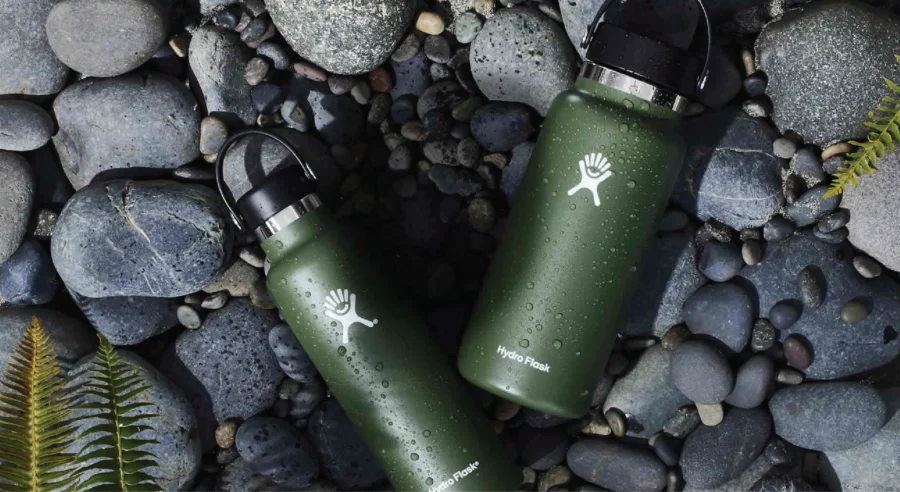
I never travel without my trusty water bottle. A solid stainless steel bottle is worth its weight in gold for travelers.
These bottles keep drinks cold for 24 hours and hot for up to 12—perfect for long days on the move. Go for wide-mouth bottles—they’re easier to clean and fill with ice.
Brands like Klean Kanteen and Hydro Flask have interchangeable lids for different situations, which is super handy. Collapsible silicone bottles work well if you’re short on space—they fold down when empty and barely take up any room.
Whatever bottle you pick, make sure it’s airport-friendly and empty it before going through security!
Reusable Containers, Lunchboxes, and Food Wraps

Reusable containers are a travel must-have. I always pack a medium stainless steel container with a tight lid for leftovers, market snacks, or packed lunches.
Collapsible silicone containers are great for snacks on the go, and they fold flat when you’re not using them. Beeswax wraps (or vegan wax wraps) easily replace plastic wrap—they’re perfect for wrapping up snacks, cheese, or sandwiches from a local shop.
They’re light, washable, and last for months if you take care of them. And don’t forget a small cloth produce bag for spontaneous market trips or groceries. They weigh next to nothing but save you from loads of plastic bags while traveling.
Travel Utensils and Reusable Straws

A compact bamboo or stainless steel utensil set has saved me from countless plastic forks. Look for sets that include a fork, knife, spoon, and chopsticks in a slim case.
Reusable straws are tiny but mighty. I like silicone or stainless steel ones with their own cleaning brush—silicone bends for easy packing, metal is basically indestructible.
Lots of utensil sets now come with straws, and some even clip to your backpack. Heads up: you might need to put utensils in checked luggage, especially metal knives. Airport security can be unpredictable!
Eco-Friendly Toiletries and Personal Care Products

Solid toiletries are a zero waste traveler’s secret weapon. Shampoo bars last for months (seriously, two or three bottles’ worth) and don’t count as liquids in your carry-on.
Toothpaste tablets save you from plastic tubes—just chew, brush with a wet bamboo toothbrush, and you’re set. No worrying about liquids at security.
Menstrual cups are a total game-changer for travel. They’re reusable, tiny, and mean you won’t need to pack or buy disposables.
Solid lotion bars, deodorant in cardboard, and bamboo cotton swabs round out a low-waste toiletry kit. Stash everything in reusable silicone containers or cloth bags, not plastic toiletry bags, for a truly zero waste setup.
Clothing and Accessories for Sustainable Travel
Packing smart for eco-friendly travel means picking versatile clothes and accessories that help you reduce your footprint. The right fabrics and multi-use pieces let you pack lighter and stay comfy no matter what the trip throws at you.
Prioritizing Multi-Use and Versatile Garments

When you pack for sustainable travel, focus on things that do double (or triple) duty. A button-down shirt can dress up for dinner or work as a light jacket.
Convertible pants that zip off into shorts are perfect for unpredictable weather. I stick to a simple color palette—1-2 tank tops, a couple of tees, a pair of shorts, and 1-2 pairs of pants that all mix and match. You get lots of outfit options without overpacking.
Accessories like sarongs are real MVPs. They work as a towel, makeshift bag, head covering for temples, or even a light blanket on a cold flight.
Pick quick-dry fabrics you can wash in a sink and air-dry overnight. That way, you need fewer clothes overall and can keep things simple.
Benefits of Choosing Organic Cotton and Natural Fabrics

Organic cotton is a game-changer for sustainable travelers. Unlike conventional cotton, farmers grow it without harmful pesticides and use a lot less water.
When you’re shopping for travel clothes, check labels for organic cotton, hemp, or Tencel. These fabrics breathe better than synthetics—much comfier in weird weather.
Natural fabrics also biodegrade at the end of their lifecycle. Polyester, on the other hand, can linger for centuries and releases microplastics every time you wash it.
I’ve found that organic cotton clothing gets softer with every wash but still holds up well. Sure, it costs a bit more upfront, but it usually lasts longer, which saves money over time.
Wool deserves a shoutout too—it’s naturally odor-resistant and regulates temperature. That means you can wear it more between washes, which is a lifesaver on the road.
Zero Waste Packing for Specific Destinations
Every destination needs a slightly different zero waste packing strategy. If you plan for the specific environment, you’ll reduce waste and avoid overpacking.
Zero Waste Packing Tips for Urban Destinations
Cities make it surprisingly easy to cut down on waste. I always pack a small backpack with a reusable water bottle, collapsible coffee cup, and a cloth shopping bag.
These basics help you skip single-use plastics when you’re out exploring. Many cities have awesome public transit, so I download transit apps instead of grabbing paper maps—less clutter, more convenience.
Look for a place to stay with kitchen access if you can. Shopping at local markets and cooking simple meals saves on takeout packaging.
When you hit up urban attractions, bring a small container for snacks or leftovers. Bulk food stores in cities often let you refill toiletries if you run out during your trip.
Sustainable Packing Strategies for Hawaii and Other Islands
Islands like Hawaii need special zero waste packing. Waste management systems are limited, so your choices really matter here.
Pack reef-safe sunscreen to protect marine life. Some islands even ban certain sunscreen ingredients, so double-check before you go.
A reusable water bottle with a filter is a must if you’re unsure about water quality. It’s way better than buying endless plastic bottles.
Quick-dry clothing you can wash and re-wear keeps your bag lighter. Light fabrics also save space and weight in your luggage.
Try compostable toiletries and a microfiber towel that dries fast. Lots of Hawaiian places provide beach towels—ask before you pack anything bulky.
Zero Waste Toiletries and Personal Hygiene Solutions
Packing toiletries can create a ton of waste, but simple swaps make a big difference. These alternatives often save space in your bag, too.
Solid Toiletries: Shampoo Bars and Toothpaste Tablets
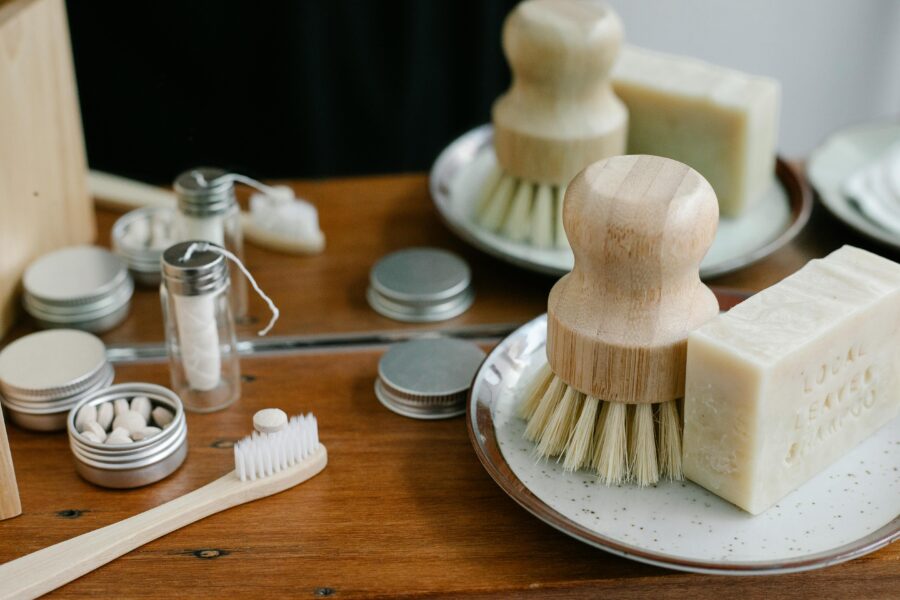
Shampoo bars have changed the game for eco-conscious travelers. One bar lasts as long as three bottles, and honestly, my hair feels softer now than it did with regular shampoo.
Pick bars in paper or metal tins, not plastic. Some brands even make 2-in-1 bars for shampoo and body wash, which saves even more space.
Toothpaste tablets are clever little things. Chew a tablet, wet your brush, and you’re good to go. They come in glass jars or paper packs, and you don’t have to worry about liquid limits at airport security.
No more shampoo explosions in your luggage, either. I’ve dealt with that mess more times than I’d like to admit!
Plastic-Free Alternatives for Feminine Hygiene
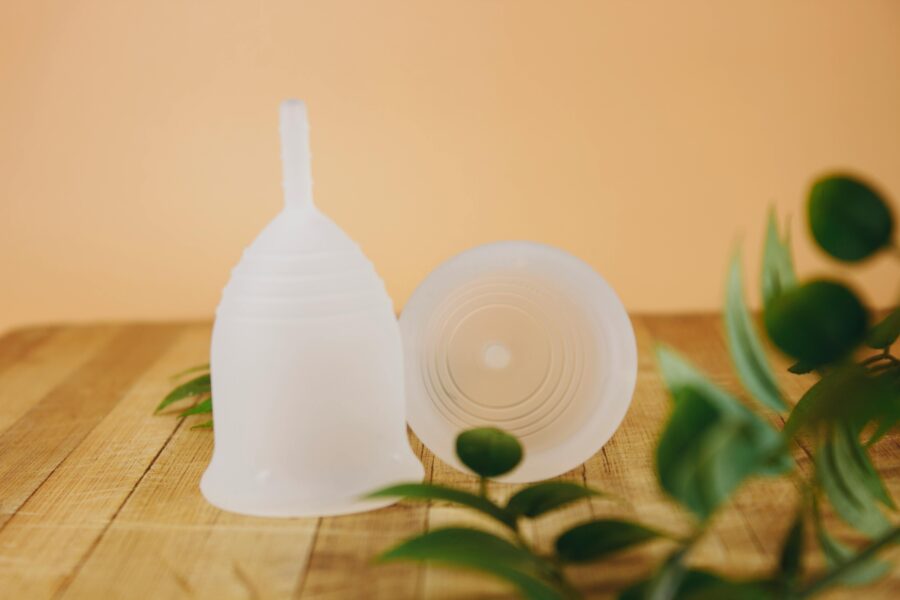
Menstrual cups are a travel lifesaver. One silicone cup can replace years of disposables and barely takes up any space.
If cups aren’t your style, period underwear and reusable pads work well too. They’re easy to wash in the sink—just bring a little soap.
Quick tip: Pack a small wet bag so you can stash used items until you can wash them.
Switching to reusables saves a surprising amount of money. After I switched to a cup, I realized I’d saved over $200 a year and kept a ton of plastic out of the trash.
Travel-Sized Reusable Containers for Liquids
For stuff you can’t get solid, reusable containers are key. Silicone or stainless steel ones hold up way better than plastic.
Get containers with tight lids to avoid leaks. I like the ones with wide mouths—they’re easier to fill and clean.
Some ideas for what to pack in them:
- Facial moisturizer
- Sunscreen (solid sticks are a thing, too!)
- Contact lens solution
- Face oils or serums
Label everything with a non-toxic marker or silicone label. It’s way too easy to mix things up when you’re half asleep in a hotel bathroom.
Zero Waste Food And Beverage Packing
Packing food and drinks can lead to a lot of trash, but a few tweaks help you cut waste big time. A little planning goes a long way.
Reusable Food Containers for Snacks and Meals
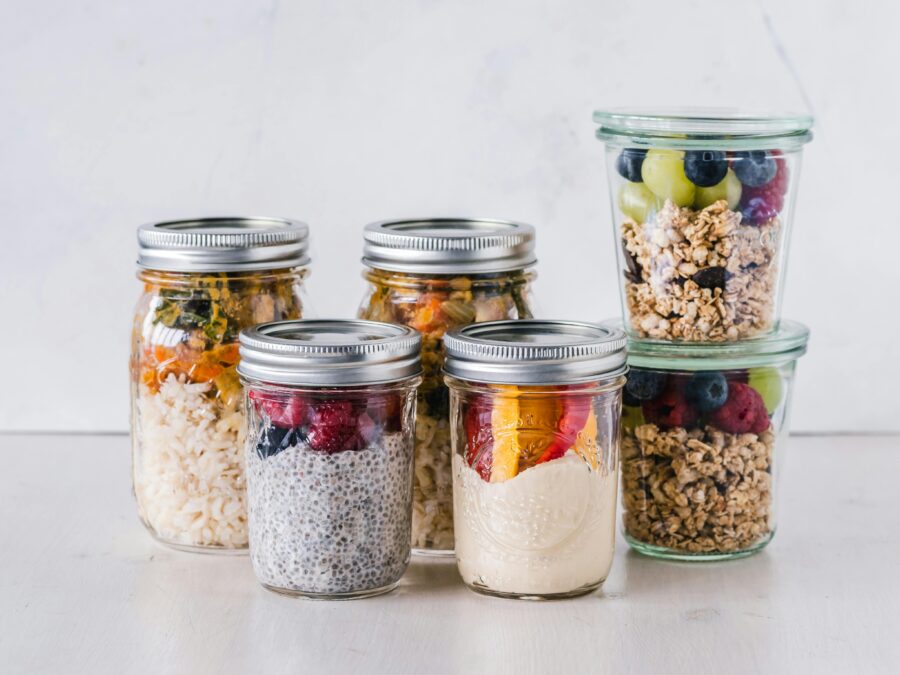
Bringing your own containers makes zero waste travel so much easier. Stainless steel or glass containers keep food fresh and stop leaks in your bag.
For snacks, I pack nuts, dried fruit, or trail mix in small jars or cloth bags. They’re light, take up hardly any space, and keep snacks handy for long trips.
Don’t hesitate to use your containers for restaurant leftovers. Most places are cool with it, and you’ll save a bunch of takeout boxes from the landfill.
At the airport, bring easy snacks like bananas or muffins. If you can, eat “for here” instead of to-go to skip disposable packaging.
Zero Waste Solutions for Coffee and Takeaway Drinks
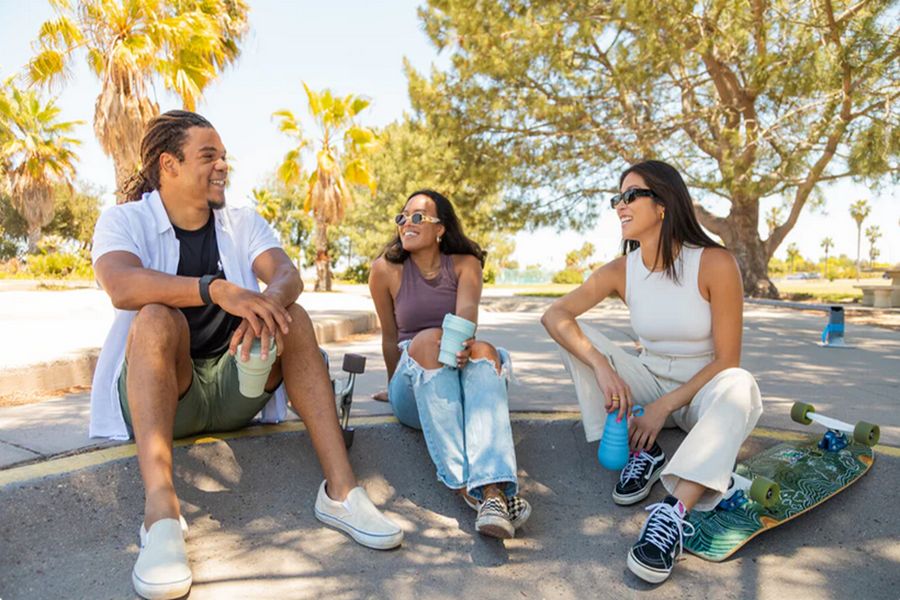
A reusable travel mug is a must for coffee lovers. Some cafes even knock a few cents off your order if you bring your own cup.
The Stojo collapsible cup is my go-to. It folds down tiny and fits in any bag, so I’m always ready for a coffee stop.
Don’t forget a reusable water bottle. Most airports and hotels have refill stations, so you can skip buying bottled water.
If you like straws, keep a metal or silicone one in your bag. Some even come with little brushes and cases so they’re easy to clean on the go.
Eco-Friendly Shopping and Souvenir Strategies While Traveling
Shopping on the road can create a ton of waste, but a few habits help you stay eco-friendly while still finding unique treasures.
Carrying Reusable Shopping Bags and Produce Sacks
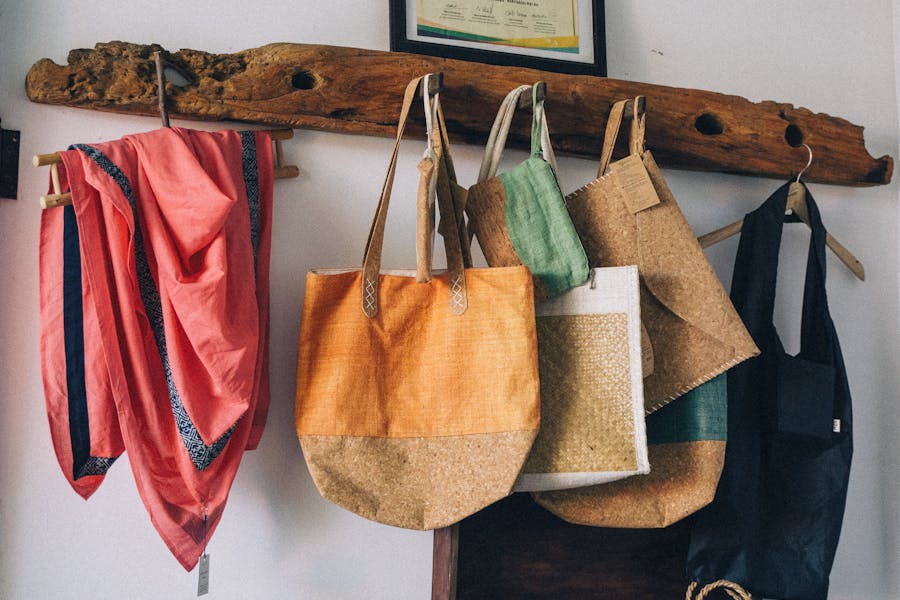
I always toss a couple of foldable shopping bags in my daypack. They barely take up space but save so many plastic bags over a trip.
Pick bags that fit in your pocket but can handle heavy stuff. Mesh produce sacks are perfect for local markets or picking up souvenirs.
Cloth bags double as organizers in your luggage. I use mine for dirty laundry or to bundle up random items. Plus, a reusable bag from a local shop makes a great souvenir.
When you shop at artisan markets, vendors often appreciate customers who bring their own bags. It’s also a fun way to chat about sustainability in different places.
Avoiding Single-Use Items and Excess Packaging
The worst offenders? Souvenirs wrapped in endless plastic and packaging. Instead, look for package-free crafts, art, or textiles.
For food souvenirs like spices or tea, bring your own containers. Vendors are usually happy to fill them. I carry a couple of small metal tins just for this.
Digital souvenirs are totally waste-free—snap photos, record local music, or collect digital recipes instead of more stuff.
Experience-based souvenirs are even better. Cooking classes or local performances leave you with memories, not clutter.
If you do buy something packaged, go for compostable or recyclable options. And always say no to extra bags or tissue paper you don’t need.
Waste Management and Recycling on the Go
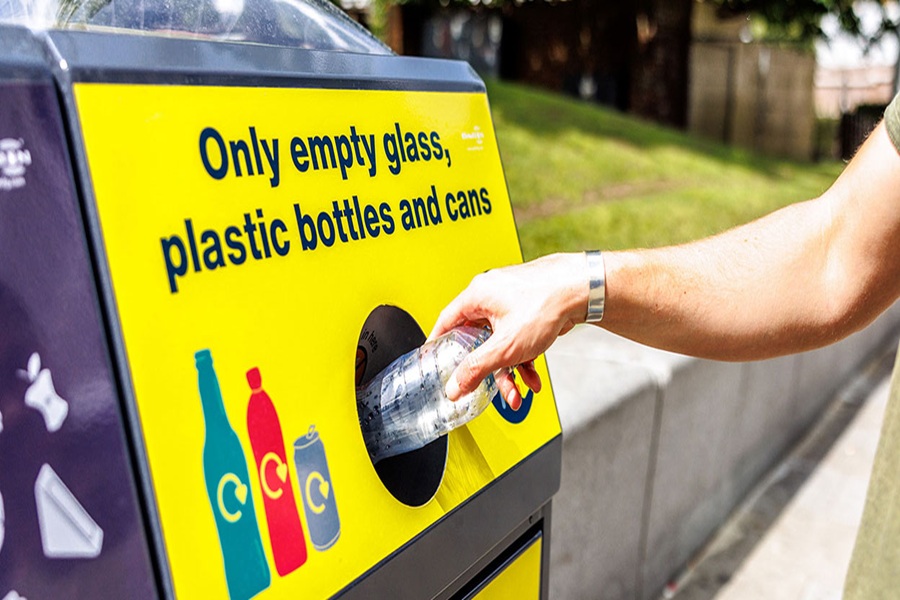
Eco-friendly habits don’t stop when you travel. With a little planning, you can handle waste responsibly anywhere.
Effective Sorting and Recycling While Abroad
Recycling rules change from country to country, so look them up before you go. In Europe, I’ve noticed they’re often strict about sorting—paper, plastic, glass, and metal all go in different bins.
A translation app helps you read recycling instructions in other languages. It saved me from some awkward moments in Japan, honestly.
Quick recycling tips:
- Flatten containers to save space until you find a recycling bin
- Keep a small paper bag handy for collecting paper trash
- Ask hotel staff about the local recycling setup
- Use public recycling bins in parks or transit stations
Some countries, like Germany, pay you to return bottles. Don’t miss out on those bottle deposit refunds!
Composting Food Scraps During Your Trip
More cities now offer composting for travelers. Ask if your hotel or Airbnb has a compost bin—lots of eco-friendly places do.
If you can’t find formal composting, try these:
- Portable composting bags to trap odors until you find a disposal site
- Collect fruit scraps in a small container and, with permission, bury them in a garden or park
- Freeze food scraps if you have a freezer, so they don’t smell before you toss them
I once stayed at an Airbnb in Portland where the host had a countertop composter. It made things so much easier!
Farmers markets often accept compost, too. Bring your scraps when you shop for fresh produce.
Practical Zero Waste Travel Tips and Tricks
Traveling sustainably is about what you pack and how you move through the world. These tips help you cut waste and keep your adventures a little greener.
Minimizing Carbon Emissions During Travel
How you travel really does change your impact on the planet. Whenever you can, pick trains over planes—trains usually pump out about 75% fewer emissions.
For shorter journeys, try buses or pile into a car with friends. It feels good to know you’re not the only one making an effort.
If you have to fly, go for direct flights. All those extra takeoffs and landings from connecting flights? They just mean more pollution.
Pack light, too—every extra pound burns more fuel. It’s surprising how much a heavy bag can add up.
Once you arrive, lean into public transportation. Lots of cities have tourist passes that save you cash and lower your emissions.
I’ve gotten hooked on renting bikes in new places. You get to know the neighborhood and your carbon footprint stays tiny.
And walking—obviously the greenest choice out there! I always try to book a place within walking distance of the main spots.
Prioritizing Carbon Offsetting Initiatives
Can’t skip that long-haul flight? Carbon offsetting helps balance things out a bit. Many airlines offer offsetting programs right when you book—usually just a few bucks extra.
Look for certified programs that support renewable energy or plant trees. Gold Standard is a solid certification to keep an eye out for.
Supporting local environmental projects at your destination is another way to give back. Maybe join a beach cleanup or visit places that fund conservation.
Some hotels now run their own offsetting initiatives. When booking, ask if they have sustainability programs you can join in on. Even small efforts matter!
Track your travel emissions with apps like Capture or Carbon Footprint Calculator. They make offsetting simple and show you where you can do better next time.
Selecting Eco-Friendly Accommodations
Where you stay can really shape your zero-waste journey. Picking the right eco-friendly lodging lowers your impact and makes it easier to stick with your sustainable habits on the road.
How to Identify Sustainable Lodging Options

Look for places with recognized green certifications—LEED, Green Globe, EarthCheck. These aren’t just for show; they mean the property actually meets tough environmental standards.
Many booking sites now have filters for eco-friendly stays, which makes searching so much easier. I wish that had existed years ago!
Small, locally-owned guesthouses usually have a lighter footprint than big chains. They tend to use fewer resources and create less waste.
Plus, you get to support the local economy. That’s always a win in my book.
Check if they offer:
- Recycling and composting
- Water-saving measures
- Energy-efficient lights and appliances
- Refillable toiletry dispensers instead of those wasteful little bottles
Read reviews from eco-conscious travelers. People usually call out if a place is actually green or just pretending.
Communication Strategies for Zero Waste Requests
Don’t be shy about special requests. Most places want happy guests, so just reach out before your stay and let them know your zero-waste preferences.
Here are a few things I like to ask for:
- “Could you skip daily room cleaning to save water and energy?”
- “I’ll bring my own toiletries, so no need for the disposables.”
- “Is it possible to have a real mug instead of a disposable cup?”
I keep a friendly email template handy so I can reuse it for every booking. It saves time and gets the point across.
If your hotel has a restaurant, ask if you can use your own containers for takeout or leftovers. Most places are happy to help, but they won’t know unless you ask.
Frequently Asked Questions
Traveling zero waste does take some planning and the right gear. Here are a few answers to common questions that might help you prep for your next eco-friendly trip.
What are the essential items to include in a zero waste travel kit?
A solid zero waste travel kit makes everything easier. I always start with reusable utensils—a fork, spoon, and knife wrapped in a cloth napkin barely take up any space.
A metal or bamboo straw is perfect for drinks on the go. I honestly use mine way more than I expected.
Bring a reusable water bottle or a collapsible cup to skip the plastic bottles. Platypus collapsible bottles are a favorite of mine since they pack down tiny.
Don’t forget a cloth shopping bag that folds up small. It’s handy for groceries, snacks, or whatever random thing you pick up at a market.
And a small container for leftovers or takeout helps you dodge styrofoam and plastic when eating out.
How can one effectively minimize toiletries waste while traveling?
Solid toiletries are a total game-changer for zero waste travel. Shampoo and conditioner bars, plus a bar of soap, cut out the need for plastic bottles and last longer than liquids.
For meds and supplements, I use a weekly pill organizer instead of hauling all the bottles. It saves space and cuts down on packaging.
Try a bamboo toothbrush and tooth powder or tablets instead of toothpaste in plastic tubes. They work just as well—no waste, no fuss.
Reusable cotton rounds and a little tin of coconut oil are great for makeup removal. Just wash and reuse as you go.
If you need menstrual products, a menstrual cup or period underwear can eliminate waste altogether during your trip.
What strategies can be employed to avoid single-use plastics during trips?
Always toss a reusable water bottle into your bag. When you need a refill at restaurants, hotels, or even airports, just ask—most folks are glad to help if you show your bottle.
Get comfortable with politely refusing straws, plastic bags, or other disposables before they’re handed over. Just saying, “No straw, please,” really does the trick.
If you have the option, sit down to eat instead of grabbing food to go. For takeout, bring your own containers and see if vendors will fill them up for you.
Try looking up zero waste shops at your destination ahead of time. Sometimes you’ll stumble on awesome places to refill toiletries or pick up snacks without all the packaging.
Pack snacks in your own containers for flights or day trips. That way, you’re not stuck buying those over-packaged airport treats or convenience store junk.



